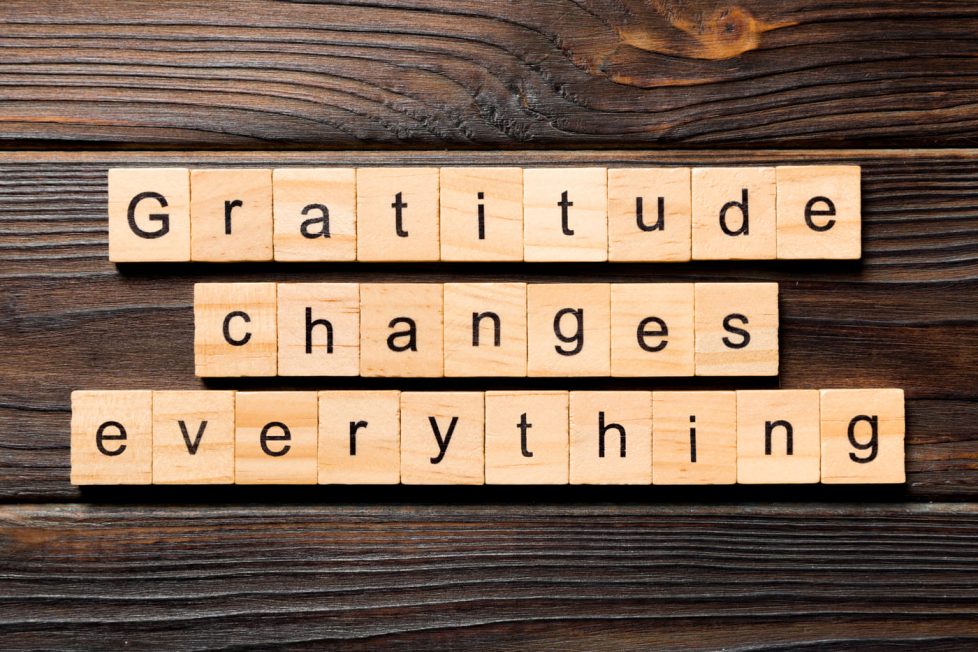Gratitude diary – how to incorporate it into your daily life
The benefits of using a gratitude diary can be more powerful than you think.

The benefits of using a gratitude diary can be more powerful than you think.

Gratitude diary and journalling focuses attention away from what you don’t have, your flaws and what’s not going well towards what you do have, your strengths and wins. Focusing on the positives leads to a more balanced perspective and can lift your mood and self-esteem.
The way we think is so powerful, the body will respond the same way to something that we believe, regardless of whether it’s real or imagined.
It can be hard to think about what you feel grateful for if you’re feeling low or anxious or if you’ve had a stressful or difficult week, but it’s at these times when cultivating feelings of gratitude can be really helpful. Think about when you’re most likely to write your gratitude journal and schedule time for it in advance.
The more specific we can be in our plans, the more likely we are to carry them out. Also, keep your gratitude journal somewhere easy to reach when you need it, like your bedside table or by the kettle. Reducing obstacles to filling out your gratitude diaryl will make it more likely that you do.

If you’ve never picked up a gratitude diary in your life, don’t be daunted. To start, choose a gratitude diary you love and a beautiful pen, then set aside a regular time to journal. That could be when you wake up, instead of switching on the TV or before you go to sleep. Committing to just three minutes a day for at least 30 days will embed the habit
As anyone who’s made a New Year’s resolution will know, sticking to a new habit can be difficult. So many people feel a sense of failure that they haven’t managed to stick to gratitude journalling every single day, but that can be down to anxiety or low self-esteem. In those cases, gratitude is a big step; like getting off the couch and trying to run a marathon. Instead, ask yourself why you might be avoiding gratitude journalling and see what comes up.
Build gratitude into your daily routine by setting realistic expectations for yourself. Simply thinking about one thing you’re grateful for during your afternoon commute or before you take that first sip of coffee is a great place to start and will have the same positive effects. Gratitude is a muscle you need to strengthen – the more you practice it, the more grateful you’ll naturally become.
It’s easy to fall into the trap of being thankful for the same things everyday: family, friends. Be more specific, think about not only what you’re thankful for but why you’re grateful for it at that particular time and write it down on your gratitude diary.
By telling others that you’re grateful for them, you not only make yourself feel good but you’ll make them feel appreciated as well. Even expressing overall gratitude can improve everyone’s attitude and encourage others to share what they’re grateful for as well.
This might seem a little counterintuitive when making a gratitude diary, but it’s important to focus on what is happening in your own life and resist the urge to compare yourself to others. Constantly comparing yourself can make it more difficult to genuinely appreciate and be grateful for the things that are happening in your life, particularly if you think someone else is experiencing more happiness or success than you.
Life is filled with obstacles, setbacks and adversity. When times get tough there are still many things to be grateful for. Challenge yourself to notice these things even when it’s difficult. Look at obstacles as opportunities to learn, grow and reflect.
Journalling daily will ensure that you carve out the time to think about what you’re truly grateful for. This can be as simple as writing down one sentence each morning. However, if you’re able to set aside more time, use this as an opportunity to express your gratitude in more detail, reflect on current challenges, and determine how you can transform them into a more positive experience.
If you’re brand new to gratitude journalling, we highly suggest the ‘Who, Where, When, What’ practice: On day one, write a page about someone you’re grateful for and why. For day two, write about a place you love and write why. Day three is about a time you remember with energy and fondness and why, and day four is about something special to you, either an object or activity that you appreciate and write why. Repeat, and voila, you have a gratitude practice! This exercise is most effective if you do each stage without thinking or reflecting on the stage that will follow.
